TPO -> Italy TPOs
Italian TPOs - 'Ufficio Ambulante'
By Tony Goodbody
TPOs made their appearance in Italy in about 1861. The Italian name for a TPO is ufficio ambulante (travelling office) and all Italian TPO postmarks incorporate the word ambulante or an abbreviation of it. Postmarks with the terminals specified with or without the term messaggero or an abbreviation thereof are from mailguards. These will be dealt with below.
The earliest postmarks were of the double circle type; see for example figure 1, the postmark of which reads AMBTE VENTIMIGLIA-GENOVA
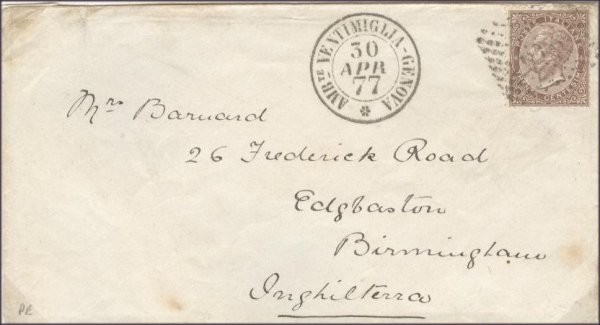
The early double circle marks were followed by single circle types such as the example shown in figure 2 for the Milano-Torino route.
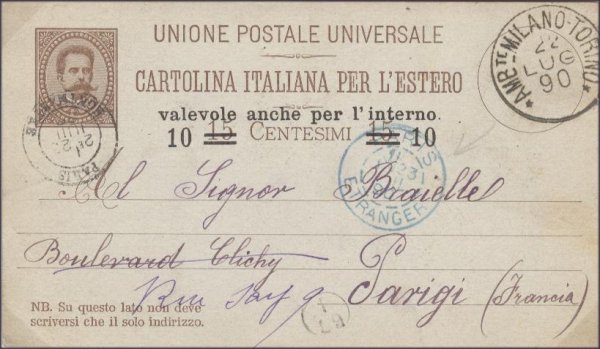
The squared circle type seems to have been used on relatively few routes, see for example figure 3: AMB. SIRACUSA - REGGIO CALABRIA (Sicily).
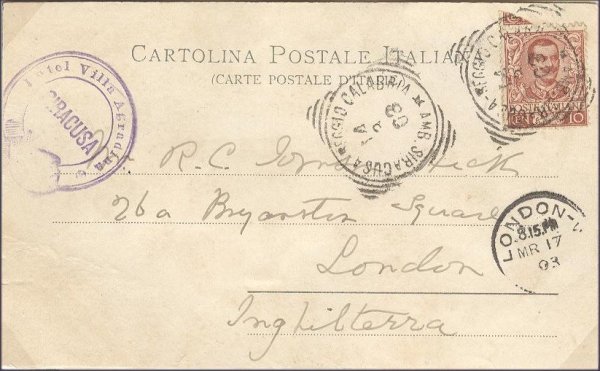
From 1914 TPO postmarks began to include the route number in the cancellation. For example the cancellation on the cover shown in figure 4 reads AMB. CUNEO - TORINO 166/ (C). The route number is 166 and 'C' is simply the index letter for the postmark.
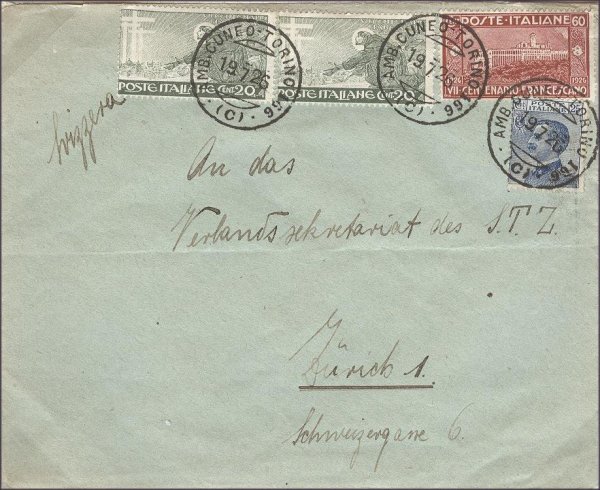
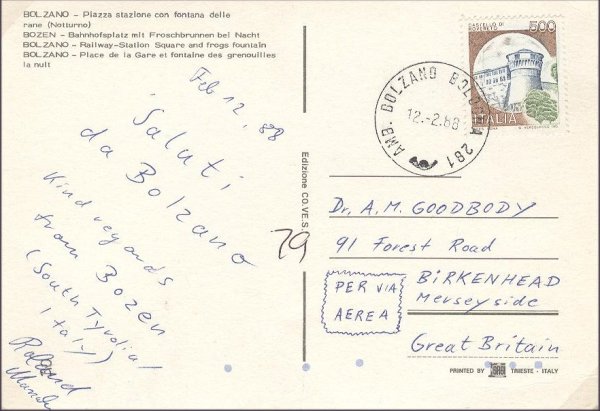
Figure 5 shows a relatively modern mark with route number: AMB. BOLZANO - BOLOGNA 281.
Figure 6 shows a postcard with the international TPO postmark AMBTE MODANE - TORINO. It would have been posted in France and franked perfectly properly with a French stamp which, however, the Italian TPO clerk studiously avoided cancelling.
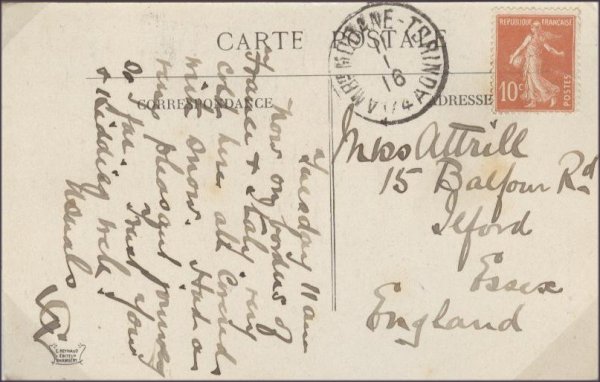
Mailguards
The Italian name for a mailguard is 'messaggero' and mailguard marks may be found with or without the word messaggero or an abbreviation of it. Thus figure 7 and figure 8 both come from the route MILANO - CHIASSO worked by a mailguard.
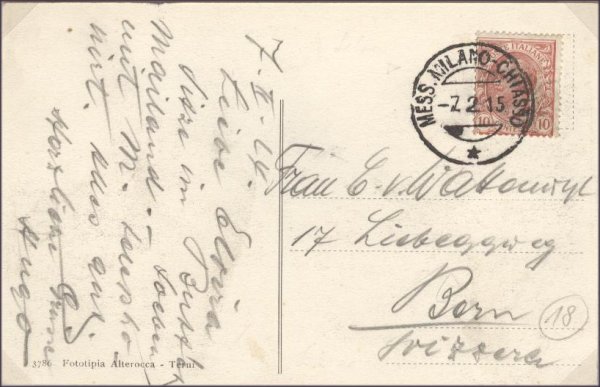
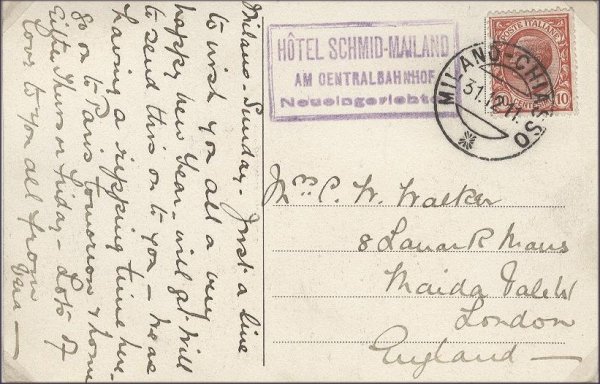
Similarly figure 9 is also a mailguard cancellation from the route ROMA - PISA.
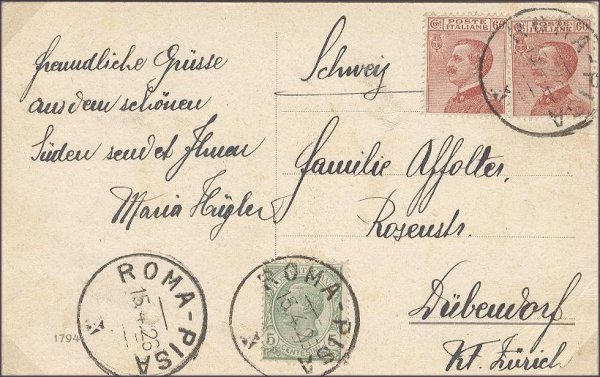
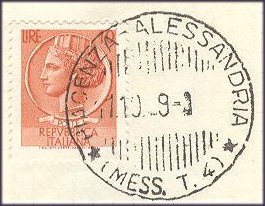 A new feature is found in the postmark shown in figure 10. "T.4" stands for TURNO 4.
The word TURNO means turn or shift.
A new feature is found in the postmark shown in figure 10. "T.4" stands for TURNO 4.
The word TURNO means turn or shift.
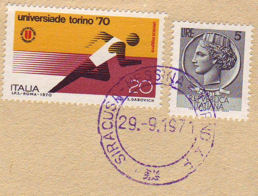 Similarly, the word "TURNO" in full appears in the SYRACUSA-MESSINA (Sicily) cancellation struck in purple ink and shown in figure 10a.
Similarly, the word "TURNO" in full appears in the SYRACUSA-MESSINA (Sicily) cancellation struck in purple ink and shown in figure 10a.
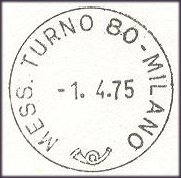 More recent mailguard postmarks contained only one terminal and it is not possible to work
out the route from the postmark alone. The postmark shown here is, of course, philatelic and
some kind person had written the route on the envelope. Thus figure 11 is from the route MILAN-SONDRIO & vice versa.
More recent mailguard postmarks contained only one terminal and it is not possible to work
out the route from the postmark alone. The postmark shown here is, of course, philatelic and
some kind person had written the route on the envelope. Thus figure 11 is from the route MILAN-SONDRIO & vice versa.
Bibliography:
There is little written in English but the article by R.A. Dehn and published in TPO Vol. 37 No.2 pp 44-48 and TPO Vol. 37 No.3 pp 60-70 is of great value.

